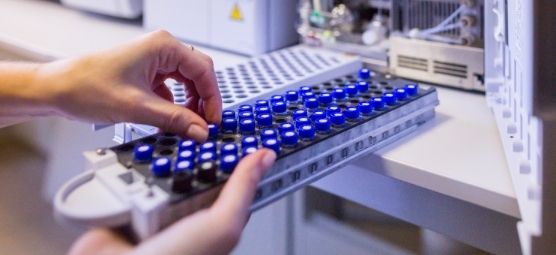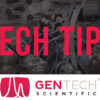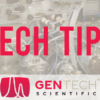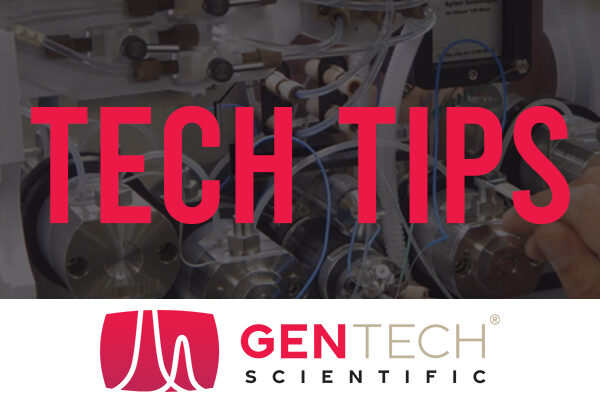One accurate and straightforward method for testing contaminants and compounds in a liquid sample is high-performance liquid chromatography. But how does high-performance liquid chromatography work?
This overview of the HPLC process explores some of the benefits of the method and its typical applications.
What Is HPLC?
High-performance liquid chromatography (HPLC) is a powerful analytical technique that separates, identifies and quantifies components in a liquid mixture. Compounds introduced into a solvent pass steadily through a column, and separate within the column as they pass through the packing materials and exit into a detector. The detector tracks and identifies the elements as they exit the column, and a chromatogram chart provides a visual analysis of the compounds.
A Few Definitions
Mobile Phase/Liquid Mobile Phase: In HPLC, the mobile phase refers to the liquid solvent or mixture of solvents that carries the sample components through the chromatographic system. It is a crucial part of the HPLC process and plays a significant role in the separation of analytes within the sample.
Stationary Phase: In HPLC, the stationary phase refers to the immobile material packed within the chromatographic column through which the mobile phase flows. It is a critical component of the HPLC system that interacts with the sample components during the separation process. The stationary phase can be either a solid material or a liquid immobilized on the solid support within the column. Its composition and properties are carefully chosen based on the specific separation requirements of the analytes being analyzed. The most common types of stationary phases used in HPLC are based on silica gel or other porous materials.
There are two main types of HPLC columns based on the nature of the stationary phase:
- Normal Phase HPLC: In this type of HPLC, the stationary phase is more polar than the mobile phase. It is typically composed of a polar material like silica. Nonpolar analytes in the sample have stronger interactions with the polar stationary phase, resulting in longer retention times.
- Reverse Phase HPLC: In reverse phase HPLC, the stationary phase is nonpolar, and the mobile phase is more polar. Commonly, the stationary phase consists of nonpolar hydrophobic materials, such as C18-bonded silica. Polar analytes in the sample have stronger interactions with the polar mobile phase and are retained for a longer time.
Solvent Delivery System: To get the mobile phase into the HPLC column, push it through at a steady flow, and then exit the column, the mobile phase needs a pump. Also known as a solvent delivery system, the pump maintains a constant flow rate, typically milliliters per minute but not exclusively depending on the scale of the process and sample.
Injector (Sample Manager): High-pressure tubing connects the solvent reservoir to the HPLC column. The injector will introduce the sample into the mobile phase stream from the pool to the column.
The HPLC Process – From Start to Finish
1. Sample Preparation: The first step is to prepare the sample for analysis. This may involve extracting and isolating the target compounds from the matrix, diluting or concentrating the sample, and filtering it to remove any particulate matter that could clog the HPLC system.
2. HPLC Instrument Setup: The HPLC system consists of several components, including a solvent reservoir, a pump, an injector, a column, a detector, and a data acquisition system. The stationary phase is contained within the column, and the mobile phase is pumped through it by the solvent delivery system.
3. Mobile Phase Selection: The mobile phase is a crucial component of the HPLC process. It is typically a mixture of solvents, chosen based on the nature of the analytes and their solubility. The mobile phase can be a single solvent (isocratic elution) or a mixture of solvents with varying proportions (gradient elution).
4. Column Selection: The column is the heart of the HPLC system, and its choice is critical to achieving the desired separation. Columns can vary in length, internal diameter, and packing material. The packing material is often made of silica particles with various functional groups bonded to their surface to interact with different types of analytes.
5. Equilibration: Before introducing the sample, the HPLC system needs to be equilibrated. This process involves passing the mobile phase through the column to ensure a stable baseline and remove any impurities from the column and mobile phase.
6. Sample Injection: The prepared sample is injected into the HPLC system using an autosampler or a manual injector. The injection volume is usually small (microliters) to avoid overloading the column.
7. Chromatographic Separation: Once the sample is injected, the mobile phase carries the sample components through the column. The sample is bunched together in one single band upon entering the column. But as the mobile phase flows through the particles, the components are slowly separated into different bands. As the sample travels through the column, each component interacts differently with the stationary phase, resulting in varying retention times. Compounds with stronger interactions with the stationary phase will elute later, while those with weaker interactions will elute earlier.
8. Detection: As the separated components exit the column, they pass through a detector that measures the concentration of the analytes. Once the detector senses the presence of a compound, it sends the corresponding electrical signal to the computer data station (chromatogram) for analysis. The sensor is not one-size-fits-all – a wide variety of detectors is available, and the selection depends on the compounds being tested. The most commonly used detectors in HPLC include UV-Visible detectors, diode-array detectors (DAD), fluorescence detectors, and mass spectrometers.
9. Data Analysis: The detector identifies the compounds and sends the data to the chromatograph for analysis. The output is recorded by the data acquisition system, generating a chromatogram. This chromatogram is a plot of detector response (e.g., absorbance or intensity) as a function of time. The data is analyzed to identify and quantify the components present in the sample.
10. Interpretation and Reporting: Finally, the results are interpreted and reported. The retention times of the analytes can be compared to standards to identify the components, and their peak areas or heights can be used to quantify the concentrations. The results are often presented in tables or graphs, showing the composition and concentration of the components in the original sample.
The Benefits of HPLC
There are numerous benefits to HPLC testing compared to other alternatives. First, it’s a very manageable process, with a small footprint. And it’s very affordable, especially with used HPLC equipment that works just as well as new equipment.
HPLC is adaptable, making it a staple in a range of applications and industries. From sample injection to results, the entire process is automated so labs can be more productive while the HPLC process runs its course.
The Many Applications for HPLC
Because HPLC is affordable, adaptable, and automated, many industries use it for testing, from environmentalists to drug companies to medical researchers.
Drug Development
The pharmaceutical industry commonly uses HPLC during the manufacturing process of its drug products. HPLC is a simple and reliable method for testing the purity of products so they can further develop better and purer products.
HPLC is quite affordable for pharmaceutical companies on a small scale, but that benefit lessens in large-scale applications. Although it’s common in testing, drug companies don’t typically use it for large-scale, bulk product drugs.
Cannabis Testing
HPLC is a common method for testing cannabis and synthetic drugs. An excellent method for characterizing cannabinoids extracted from the cannabis plant, HPLC enables drugmakers to understand the drug’s potency.
HPLC has also been a valuable tool for advocates of the drug’s legalization as the method has helped to disprove unfounded claims about the plant and prove its medicinal qualities.
Medical Diagnosis and Research
HPLC testing is also helpful for the medical field and patients. HPLC separates components from mixtures and analyzes nutrients precisely and reliably in a person’s blood, so can determine things like vitamin deficiencies. It’s also common in clinical research to use HPLC to identify metabolites in patients with existing illnesses.
For instance, a researcher could use HPLC to identify metabolites in a patient with Parkinson’s disease, which will help them learn more about early diagnosis for future patients.
Illegal Drug Detection
Along with detecting what’s not in a person’s bloodstream (vitamins), HPLC can see when illegal agents are present, such as cannabinoids, cocaine, or LSD. It can also detect doping agents and opioids, so HPLC is a standard method for forensics, law enforcement and athletic leagues to test players for illegal substances.
Food Contamination
Chemicals are used in agriculture and food production more than ever before. To ensure that the food we grow and consume is safe, HPLC analysis is used to identify any possible contaminants or chemical residues before they’re released to the public.
This concludes our overview of how high-performance liquid chromatography works, its benefits, and its applications. If you have questions about HPLC or HPLC systems, we invite you to consult with the experts at GenTech Scientific.

Shop GenTech Scientific’s large inventory of quality refurbished HPLC systems and components. Why buy new when you don’t have to?





